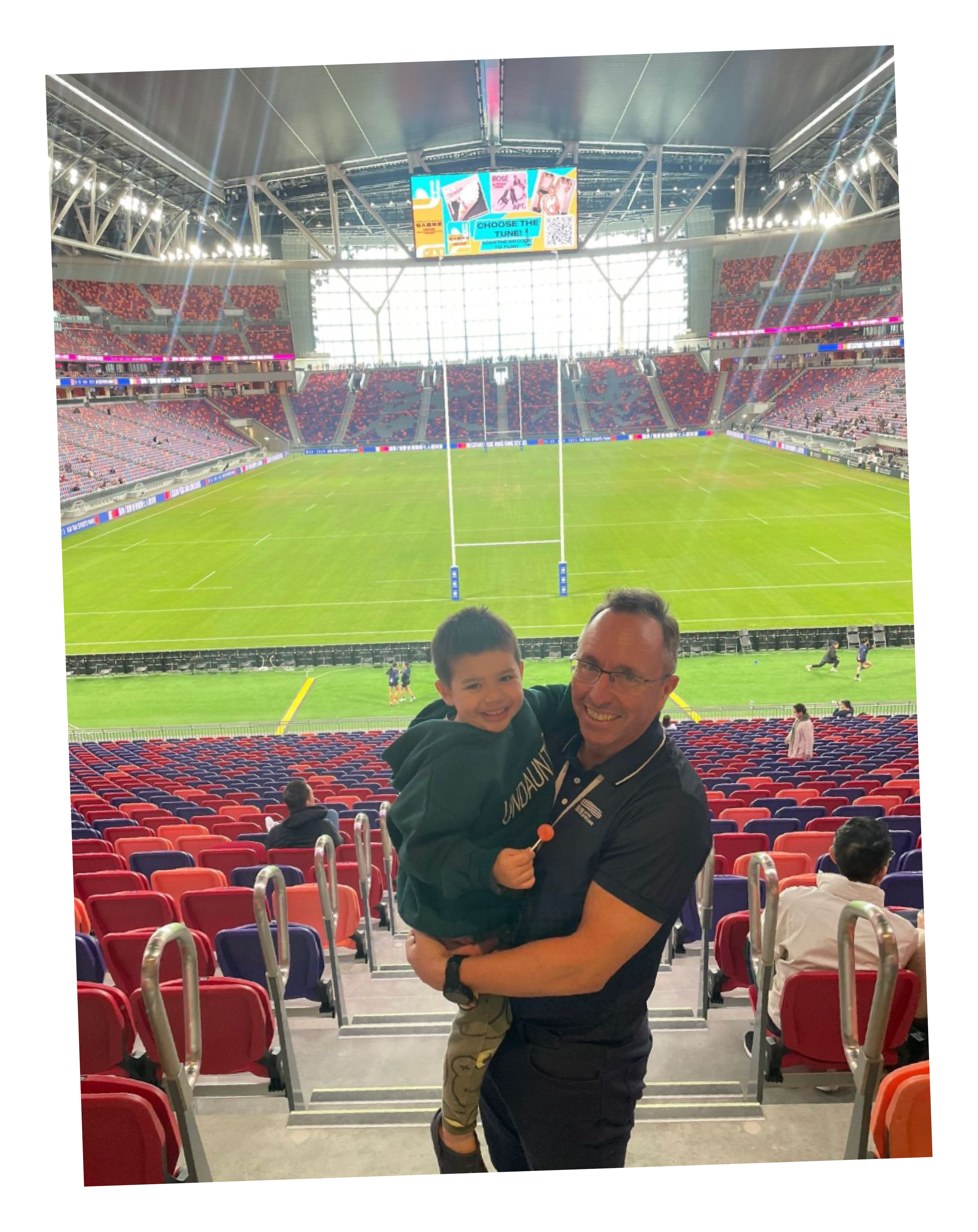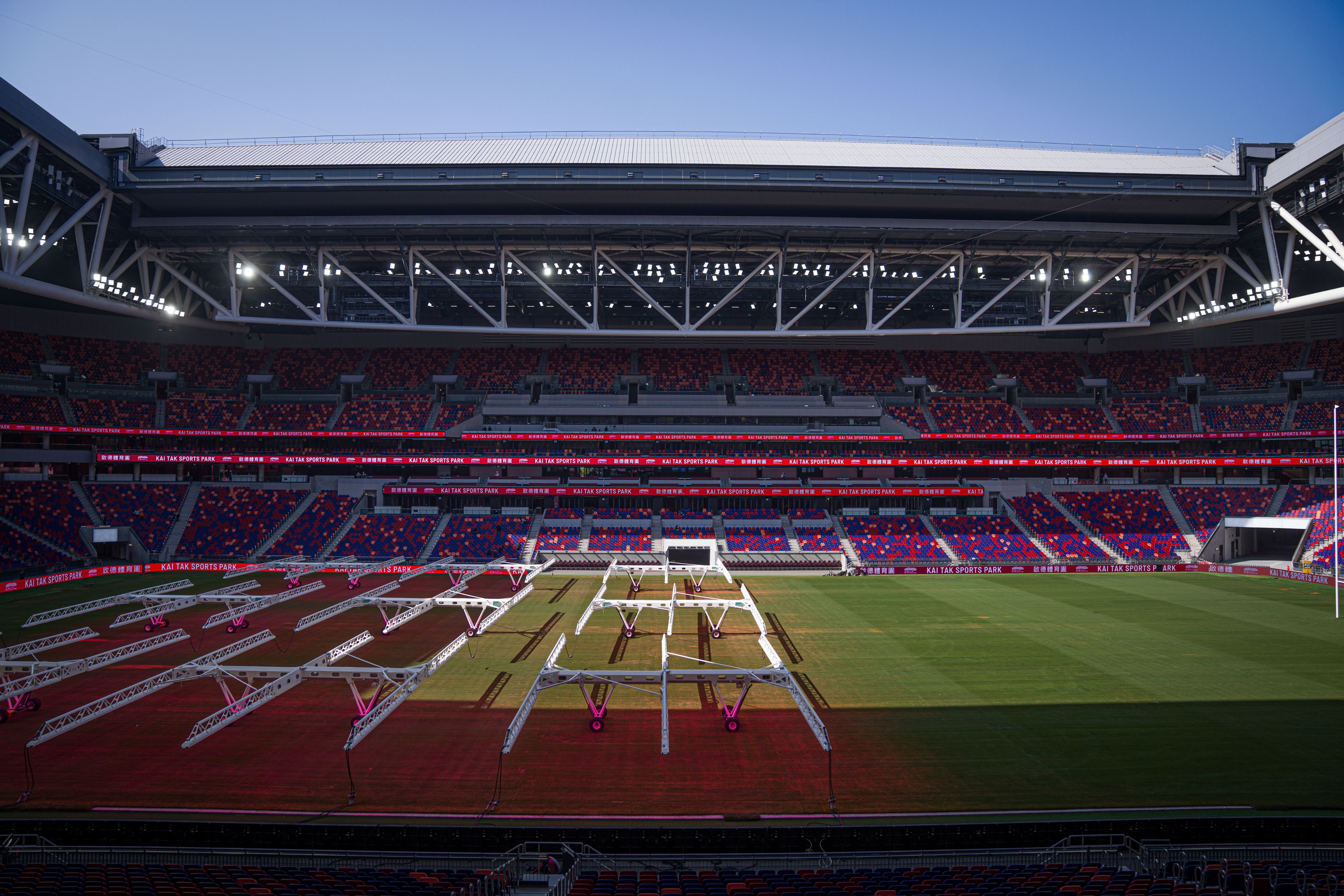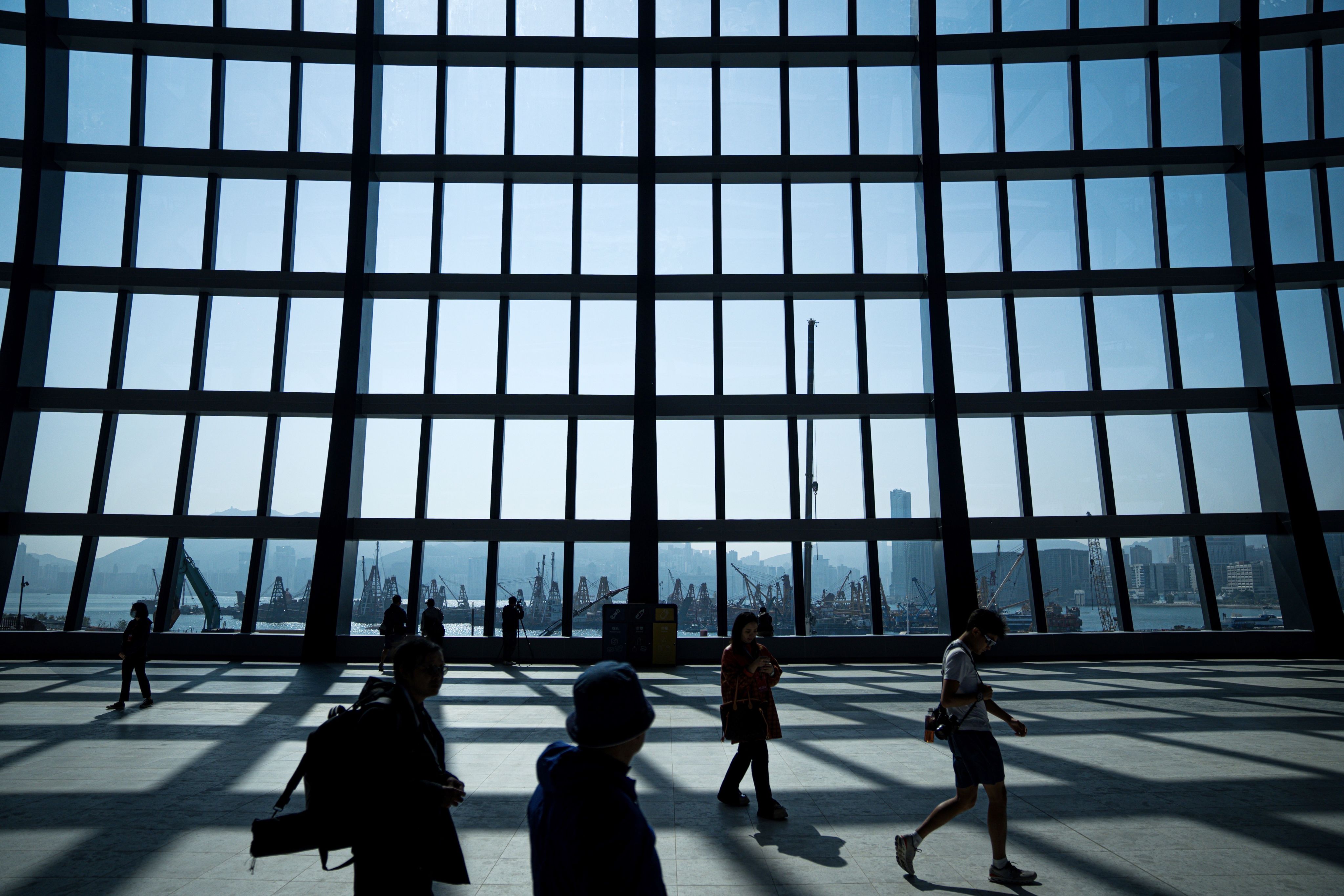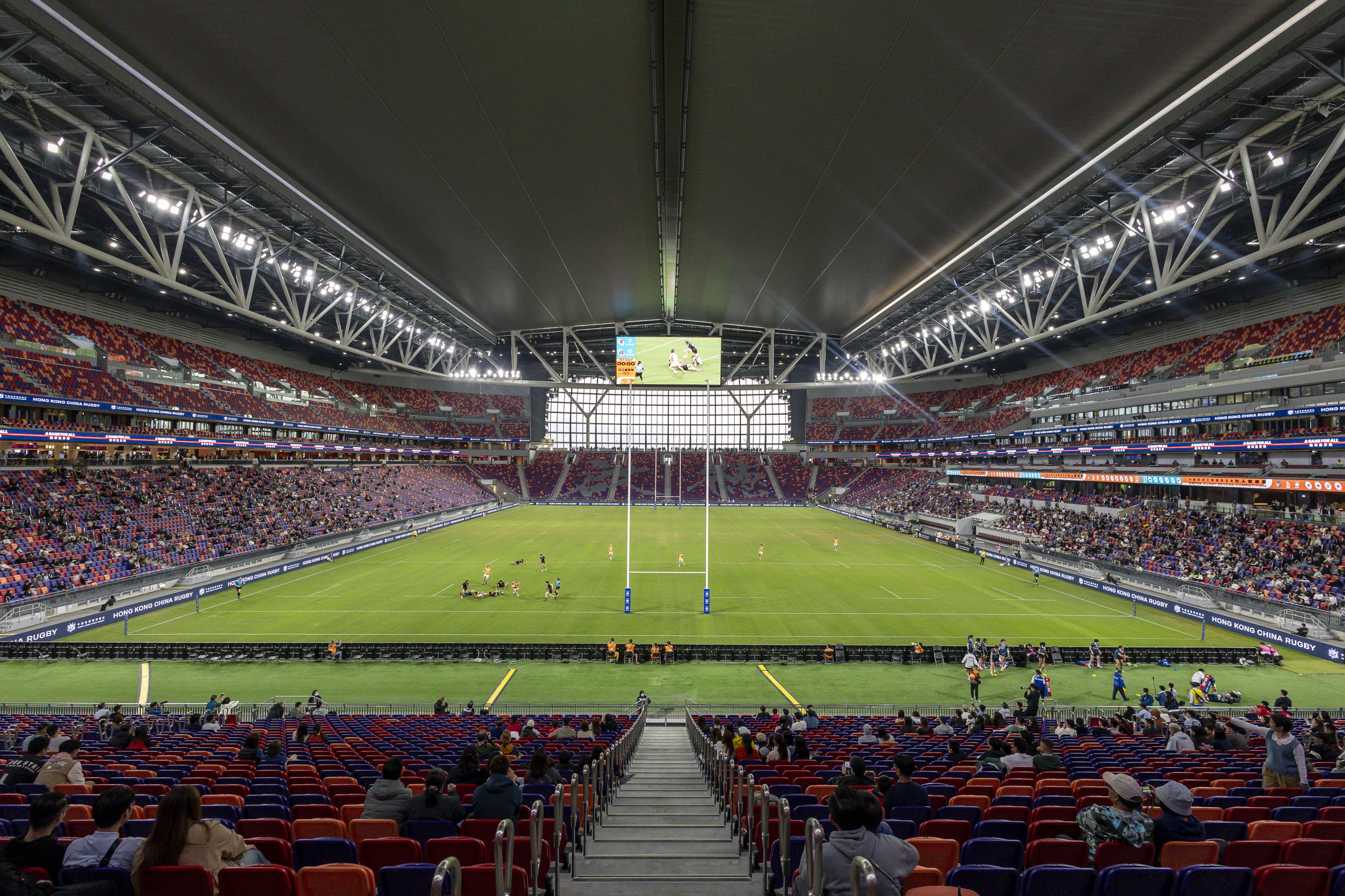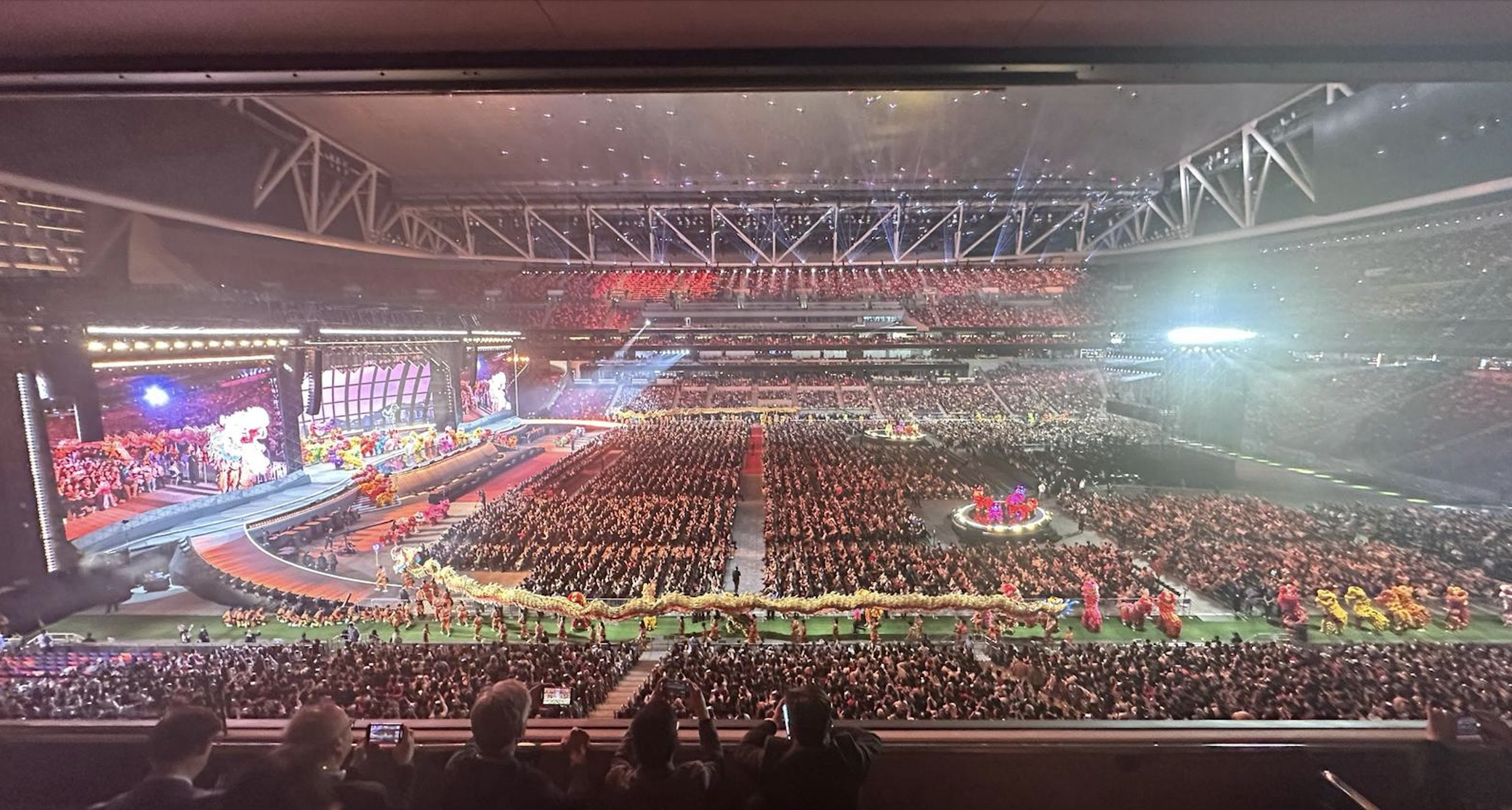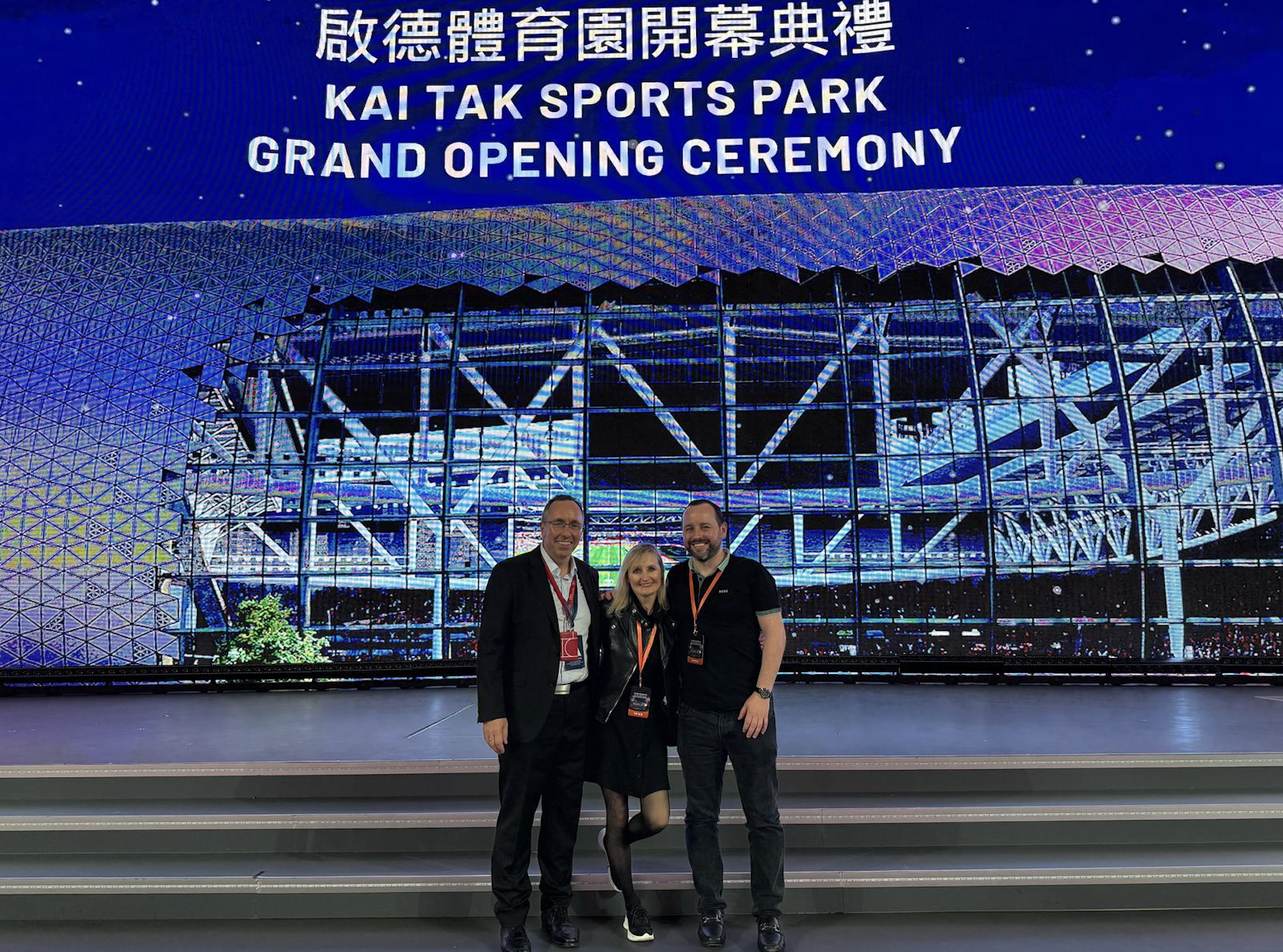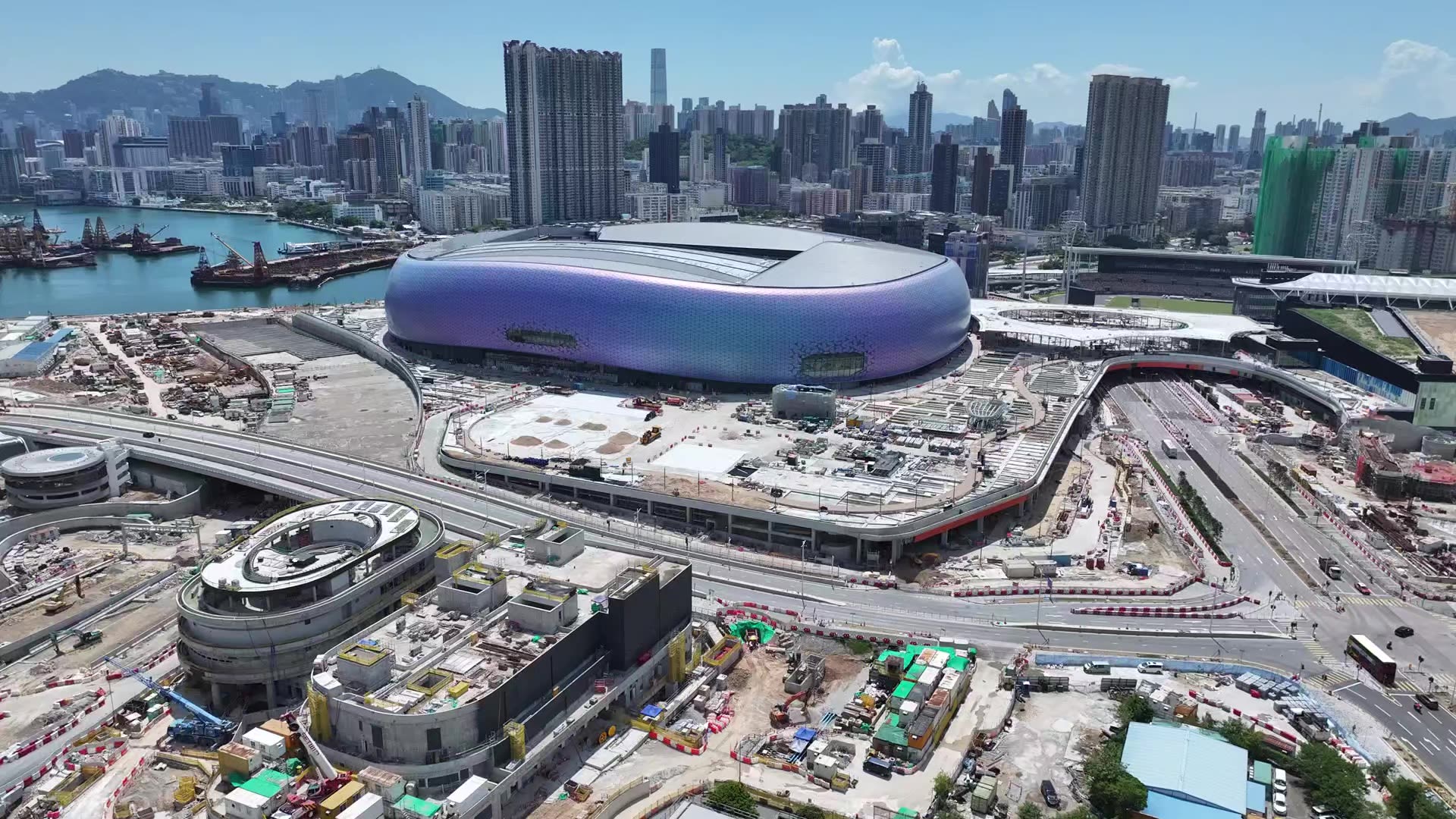
Step in the arena
Kai Tak Sports Park, the world’s second-most expensive sports complex, opened on March 1, and will soon host the massive Hong Kong Sevens rugby tournament, followed by four nights of Coldplay. John Sharkey CA has spent the past decade project managing its construction. “I’m having to pinch myself,” he tells Ryan Herman
Step in the arena
Kai Tak Sports Park, the world’s second-most expensive sports complex, opened on March 1, and will soon host the massive Hong Kong Sevens rugby tournament, followed by four nights of Coldplay. John Sharkey CA has spent the past decade project managing its construction. “I’m having to pinch myself,” he tells Ryan Herman

It was a chance conversation during a five-a-side football match in Strathclyde that set John Sharkey CA on a path to becoming CEO of the world’s newest major sporting venue, built on one of the most expensive pieces of real estate on the planet.
Having opened on 1 March, the Kai Tak Sports Park in Kowloon, Hong Kong will hold its first big sporting event at the end of the month – in this part of the world tournaments don’t get much bigger than the Hong Kong Sevens rugby competition. Around 150,000 spectators are expected to attend the three-day tournament, which is often described as the city state’s biggest party. Then April will see Coldplay headline four sold-out nights.
Both events will be held at the Kai Tak stadium, which has a seated capacity of 50,000, rising to 65,000 for concerts. The sports and retail park also includes a 10,000-seat indoor sports centre, a 5,000-seat public sports ground and dozens of shopping, dining, entertainment and leisure destinations.
John Sharkey CA with grandson Nate in the Kai Tak stadium
John Sharkey CA with grandson Nate in the Kai Tak stadium
Kai Tak is different to any other equivalent project in that it has mostly been funded by the Hong Kong government, while the operational side is run by Kai Tak Sports Park where Sharkey is now CEO having previously been Project Director.
“We’ve got a 25-year contract where we generate income for the government, and then we run the precinct and deliver the KPIs in terms of number of events, attendees and enrolment hours in sports programmes.
“We also get the opportunity to sweat the asset and make a return on that investment across the whole site. With the land prices as they are in Hong Kong, it’s 28 hectares at roughly $1bn (£790m) a hectare.”
Given that the total bill for the Kai Tak Sports Park comes in at around $4bn, making it the second-most expensive development of its kind (the SoFi stadium development in Los Angeles cost approximately $6.75bn), there’s a fair amount of sweating to do. Despite that, Sharkey remains focused first and foremost on making the stadium into a true theatre of dreams.
“Because a lot of government money has gone into it we’ve been very, very focused on reinforcing that this is an asset for the people of Hong Kong,” he says. “You’re laying down a legacy for generations to come. Kids who will attend their first national football match as a fan here may one day grow up to play on this pitch. Couples will come here and propose to one another during our concerts. It’s more than a venue.”
Flight path
Sharkey has been involved in the sports and entertainment business since 2002, having qualified as a CA in 1991.
“I wanted to become a CA because of a great-uncle who was a pilot in the First World War and ended up running his own chartered accountancy business. So, I did my CA and then did an MBA as part of a career development programme with EY – and that is when I realised I really wanted to get into industry.”
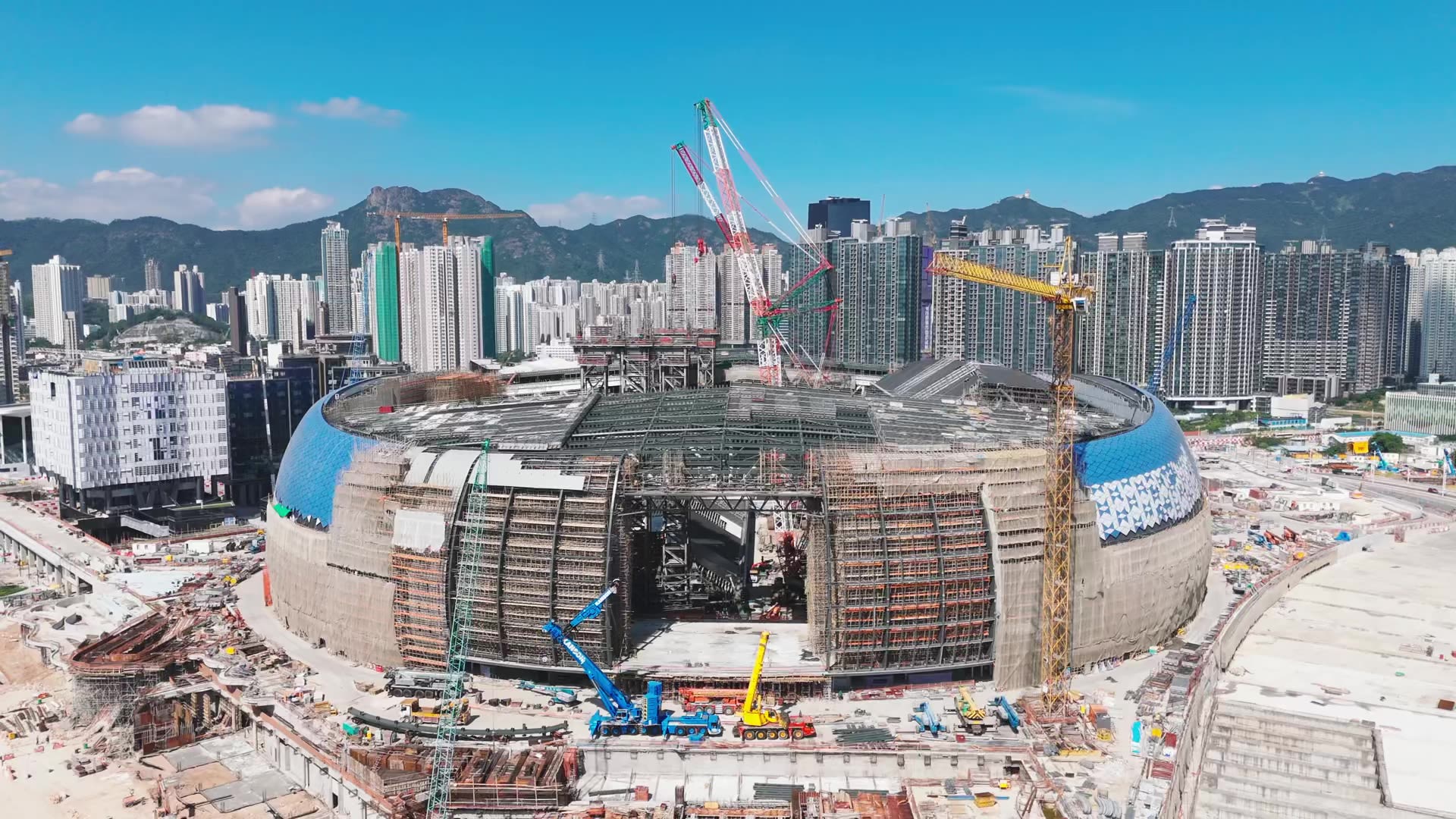
Sharkey spent three years at Scottish Enterprise before joining the private sector at transport operator First Group. Then came that five-a-side football match and a chat with a friend who was recruiting for the CFO role at the Scottish Exhibition and Conference Centre (SECC), which would be a stepping stone as part of a succession plan to Sharkey eventually becoming CEO.
“At that point in time, the OVO Hydro Arena [built as part of the SECC complex] was just a dream, a piece of paper. So I went in there, became part of the team that developed the business plan, did the feasibility study and then secured commitment from shareholders along with the funding. I then became CEO [of SECC] just as the property crash happened in 2008 and we lost £40m of funding overnight.
“But as it turned out, it was a cracking experience that shaped the next part of my career, without a doubt. And sometimes you need a bit of luck. The fact that building for the [2014] Commonwealth Games in Glasgow was well under way, and the Hydro was going to be one of the venues… maybe in another world there would have been a decision to mothball the site for a couple of years, and then the mothball would become something that simply never happened.”
“Kids who attend their first national football match as a fan here may one day grow up to play on this pitch. Couples will come here and propose to one another during our concerts. It’s more than a venue”
The successful completion of the Hydro provided a springboard for Sharkey to become Executive Vice President Europe of ASM Global, which develops and manages sports venues around the world, including Caesars Superdome in New Orleans, which hosted this year’s Super Bowl.
Then, on a trip to visit his son in Hong Kong in 2016, Sharkey heard about a huge new project that would include building a stadium. He went back to ASM’s American board and told them about the project. Sharkey ultimately headed up a tender bid, which also involved architects, contractors and engineers, as Project Director because he had construction and operator experience.
He had no intention of working on the project but it was lacking somebody with his operational background. So he was talked into expanding his role. Then Covid happened, all of ASM’s venues had to shut down and Sharkey found himself in seemingly endless calls with ASM’s various global arms as the company battened down the hatches to ensure it survived the pandemic.
Education
1988
1994
1998
2002
2014
2022
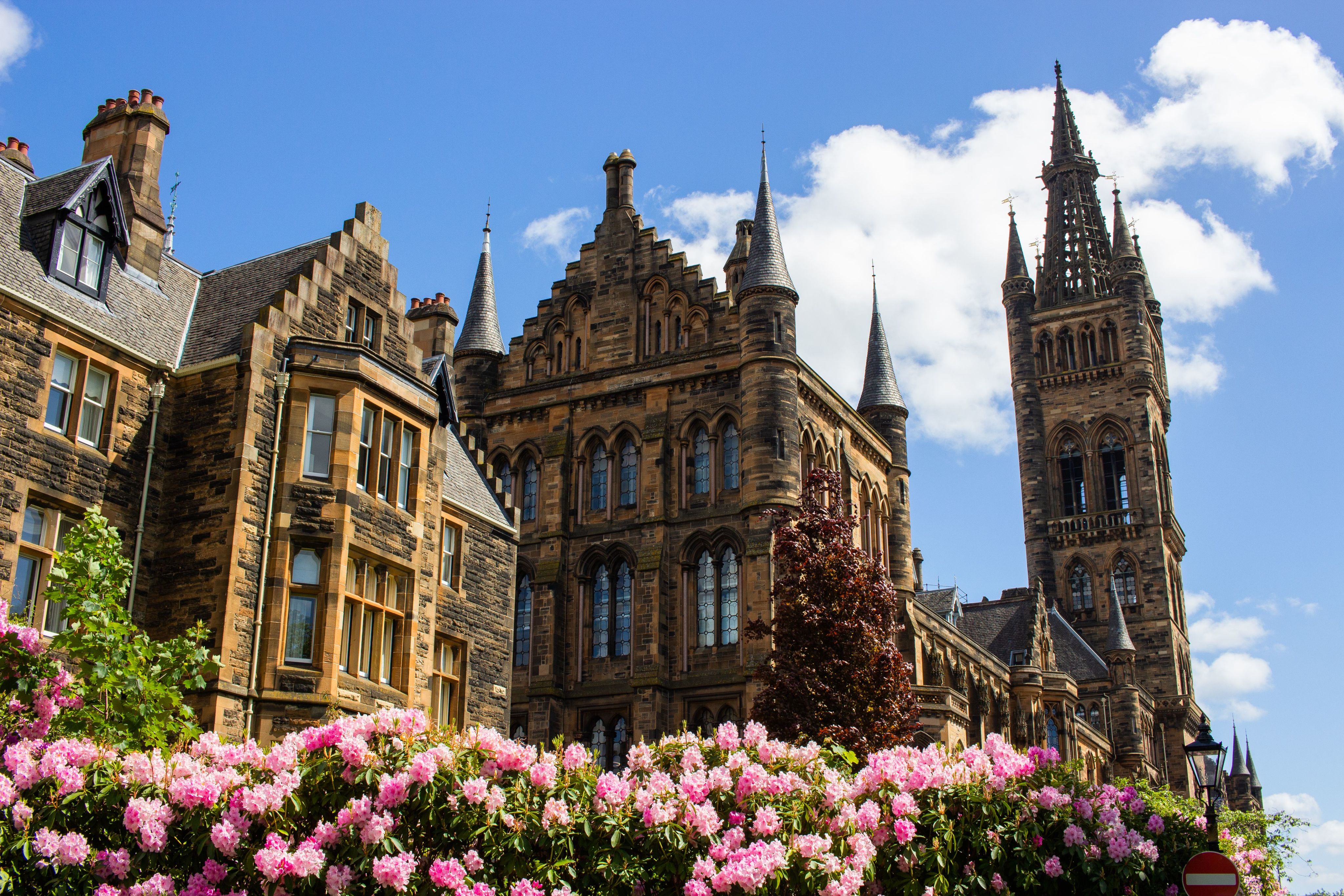
Above: University of Glasgow. Below, clockwise from main image: student rugby match played as a stadium “test” in January; LED lights grow the pitch grass; inside a stadium tour; John Sharkey CA pictured with his wife Linda and son Jonathon; the stadium’s opening ceremony
Sharkey was effectively doing three jobs at once. “It absolutely crushed me,” he recalls. He needed to reduce his workload, so when it was suggested he focus on one big job, living in Hong Kong as Project Director of Kai Tak, he seized the opportunity.
His son had recently moved back to the region, which meant Sharkey could spend more time with his family. It also meant he could focus on one job, albeit a very big one with some unique challenges. Developments built on a fraction of this size and scale rarely run smoothly or complete on time, but Kai Tak was especially difficult because of the tough Covid restrictions that threatened to cause serious delays and rising costs for Kai Tak.
“We were supposed to bring most of the structure from the mainland into Hong Kong. But we couldn’t do it because even if you could ship stuff from the factories, you couldn’t bring it over the border.
“So we had to think laterally and brought all of our structural steel and precast concrete on barges through Victoria Harbour right up to the site. The barge team had to turn back around and quarantine for three weeks before they took another load.”
Having navigated that problem, another key consideration was sustainability. “We have rainwater harvesting that feeds our turf strategy,” says Sharkey. “We’ve also got solar panels on the roof that feed back into a grid. We’ve got paper cups that can be broken down along with our food waste – we compost it together and use that to feed all of our soft landscaping on the precinct.
“You never lose the key disciplines that you’re taught going through your CA qualification, the financial acumen that you need in your back pocket”
“We’ve also got a huge amount of green landscaping, from turf to trees to plants to roof gardens. And we’ve done something quite interesting with the pitch; we’ve got a drainage layer, which is a base layer, and we’ve then got an artificial pitch over that.
“We’ve then got what’s called an I-track structure over the top of the artificial pitch, which is two to three inches of heavy-duty material that allows trucks to come over the top of it when building concert stages and have an audience on the pitch.
“Then, whenever we’ve got the big international sporting event, we bring in a natural turf pitch layer, play a sport, remove it and take it back to a turf nursery elsewhere in Hong Kong.”
From an audience perspective, one of the most important considerations for any new venue is wi-fi. “If Chris Martin’s coming out onstage, you want to be taking a photograph of that moment, you want to load it up into your Instagram, or whatever site you use, and show that you’re there in the moment,” says Sharkey.
“Normally, you would put big antenna poles around the pitch but that will affect sightlines. So we’re taking a look at how we can effectively clone 5g that replicates your wi-fi.”
A decade’s dream
Given that Kai Tak has occupied 10 years of Sharkey’s life, how does he feel about seeing the project reach its completion?
“I met up with Jonathon, my son, and my grandson, Nate, and my wife, Linda, for lunch. We were sitting in one of the rooftop restaurants, with an open-air view of the whole precinct. I said, ‘I’m having to pinch myself at the moment because 10 years ago this was just a dream. So to sit here and look at it all finished gives you a great sense of achievement.’”
But as he also reflects on his career during our conversation, Sharkey says he is forever indebted to the training and skills he learned on his way to becoming a CA, along with several years spent serving on the disciplinary board at ICAS.
“The single biggest thing that’s helped me is the discipline that my CA training gave me across my career. Even though I moved out into industry, starting with CFO roles and then moving into CEO roles, which I’ve been doing for almost 25 years, you never lose the key disciplines that you’re taught going through your CA qualification, the financial acumen that you need in your back pocket. You can move quite quickly through the numbers, and you also have a really good understanding of those numbers from a helicopter level.
“But it’s not just that approach to discipline and project management and systems. It’s also the way that you look at and do business. Ethics has always been a core part of our professional qualification. Having that ethical approach, and not wearing it on your lapel, but just having it, is a core part of the way that you should be conducting yourself.
“I’ve been able to bring all of those skills to any project and I would have been much the poorer without them.”
For more on working in Hong Kong, read our interview with David Bruce CA




